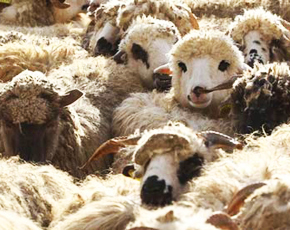This series of blogs is intended to highlight that ours is an integrated ecosystem cohabited by humans and animals, both domesticated and wild. These animals contribute to the health and well-being of people by providing protein-rich nutrients, transportation, fuel, recreation, and companionship. But at the same time they can contribute to public health risks that emerge at the human, animal and ecosystem interface.
_____________________________________

Today our health care system needs to pay more attention than currently paid to answer questions like what is causing persistent appearance of pesticides in maternal milk, what new challenges are introduced as infectious diseases globalise, why is there emergence and re-emergence of diseases in animal populations, and from animals into people.
Traditionally, in our cultures, animals were not seen only as food, but they were also our companions. They were beasts of burden but they also have inspired poets and painters in history to write ballads and paint master pieces. In our lexicon, they provided metaphors for everything from faithfulness (the loyal dog) to the ridiculous (silly owl), the industrious (busy bee), the outcast (black sheep) and the impotent (lame duck). They are property and yet they are worthy of societal protection from abuse.
The human–animal–ecosystem interface is indeed a continuum of exposure between humans and animals, their products and their environments. Some zoonotic diseases also have the potential to spread efficiently across international boundaries, thereby affecting not only people's health and their livelihoods, but also international travel and trade.
In the past 60 years, more than 70 per cent of all newly emerging infectious diseases in humans have originated from animals. Examples of these are avian influenza, SARS, West Nile virus, hantavirus, porcine hepatitis E, and livestock associated MRSA or LA-MRSA. Of these zoonotic infections, 70 per cent originate from wildlife.
Many modern diseases, even epidemic diseases, started out as zoonotic diseases. It is hard to be certain which diseases jumped from other animals to humans, but there is good evidence that measles, smallpox, influenza, HIV, and diphtheria came to us this way. The common cold and tuberculosis may also have started in other species.
There are many known pandemics in human history with probable animal origin which reeked havoc on human health and life killing millions globally and making many unwell. Two of the more recent ones include the influenza epidemic of 1918-19. It was a big one, killing about 50 million people worldwide. The Hong Kong flu of 1968-69 caused at least a million deaths.
Influenzas are also zoonotic illnesses. They are spread from wild birds, sometimes with a domestic animal as intermediary host on the way to humanity. AIDS is a zoonosis; the pandemic strain of HIV emerged about a century ago from a single Cameroonian chimpanzee.
Ebola is another zoonosis. The Ebola viruses (there are five known species) abide inconspicuously in some as yet unidentified creature or creatures native to Central African forests, spilling over occasionally to kill gorillas, chimps and people.
SARS is a zoonosis that emerged from a Chinese bat, fanned out of Hong Kong to the wider world, threatened some years ago to be the next big global endemic, and then was stopped, only barely, by fast and excellent public health science and professionals.
LA-MRSA, is an important example of animal disease that is now ‘spilling over’ to the animal side, but once animals are infected with MRSA they can pass along such superbugs to humans and other animals.
Health workers working in the veterinary and human health systems are the primary source of keeping tabs on the zoonotic by providing surveillance data. However, it is important to understand the systems in which they work and the total disconnect between human and animal health systems. The ability and willingness of the human and animal health workers to report disease prevalence and outbreaks is point in focus.
Building systems and means that promote cooperation between the two currently distinctly desperate systems to tackle existing disease problems can help to build the core capacities required for successful surveillance of all zoonotic diseases and also identify appropriate mechanisms for incentivising reporting to build sustainable systems.
It can be argued at length that many endemic zoonoses are prime areas for investment in disease control measures and that many surveillance systems that were set up to deal with specific pathogens – such as polio or influenza – have now expanded their surveillance efforts to other diseases.
Investment in the surveillance of endemic zoonotic pathogens provides a mechanism for building exactly the core capacities that are likely to enable the detection of emerging infections. Building a culture of surveillance and the core capacities that are needed for control of zoonotic pathogens, including emerging disease threats, is an essential area of development in public health. It must be developed before a new epidemic threat arises torisk human health and life.

The views expressed by this blogger and in the following reader comments do not necessarily reflect the views and policies of the Dawn Media Group.








































